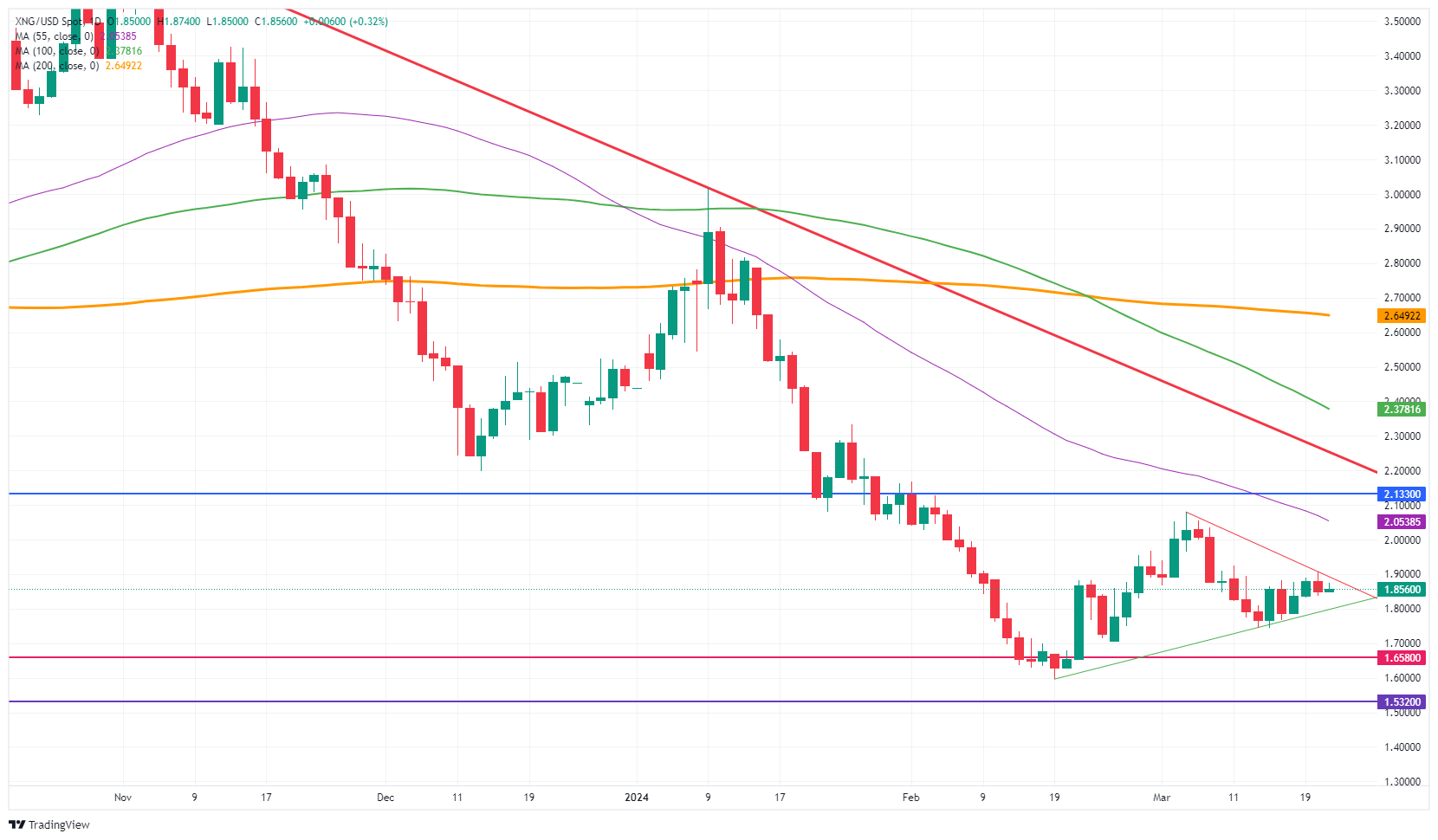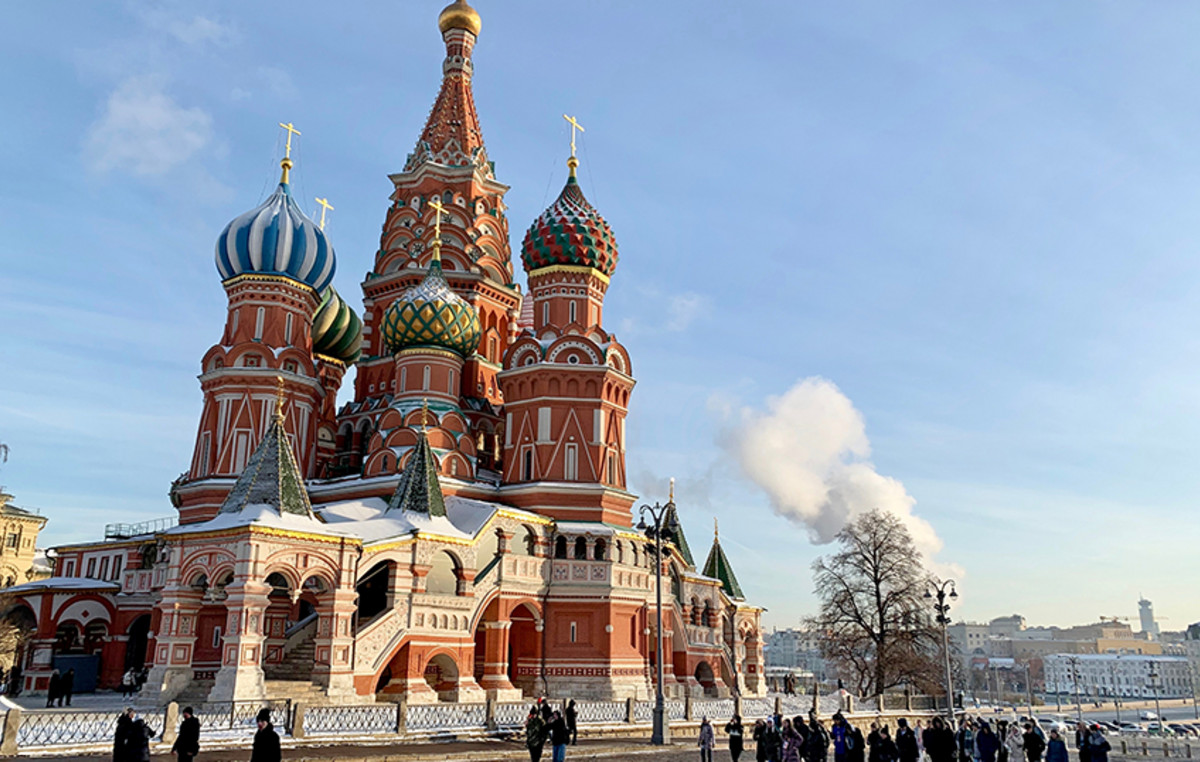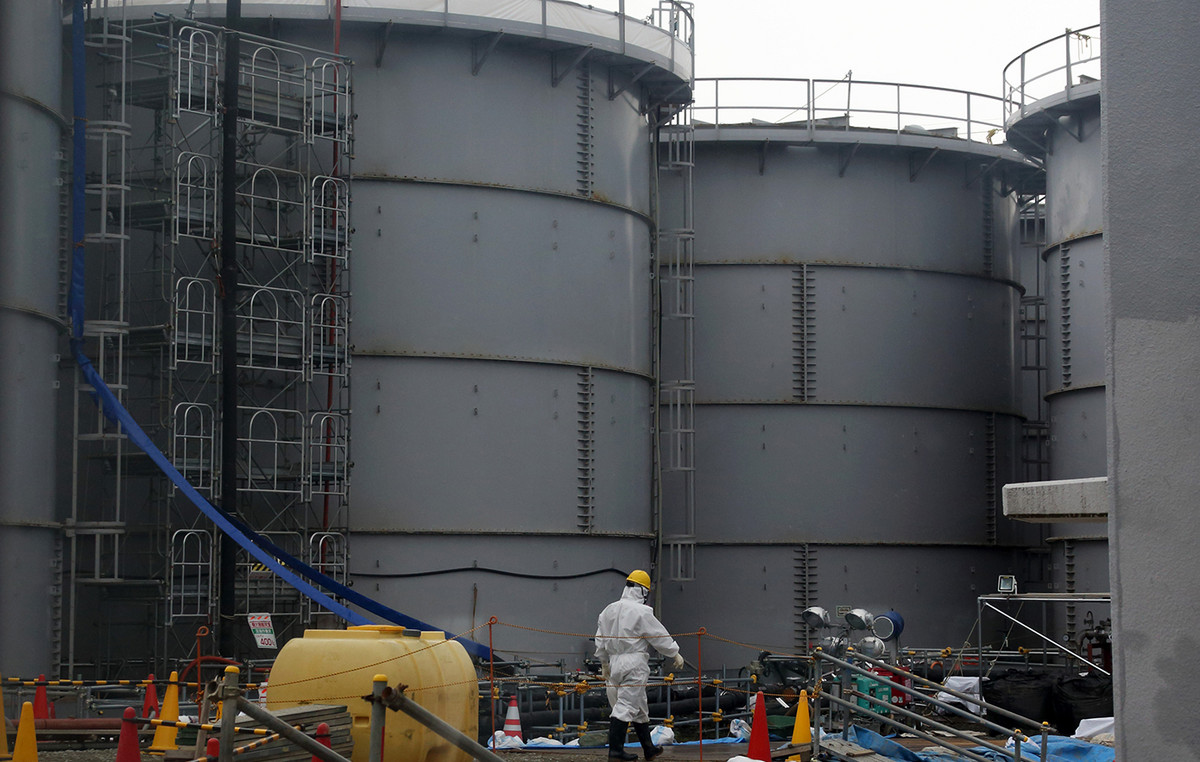- Natural Gas prices fall again below $1.90.
- Investors are focused on solid gas reserves in Europe ahead of the next heating season.
- The DXY Dollar Index fell to the low 103.00 points after the Fed meeting.
Natural Gas (XNG/USD) prices are trading lower on Thursday, following profit-taking on Wednesday, when investors withdrew profits from bullish positions taken in recent weeks. Due to recent supply problems and delivery delays, European Gas reserves are not being depleted as quickly as expected, so investors are forced to take profits. Meanwhile, Liquefied Natural Gas (LNG), as an energy commodity, is facing pressure from European leaders, who advocate a renaissance of nuclear energy.
Meanwhile, the US Dollar Index DXY fell back below 104.00 and retreated almost completely to 103.00 points. The US Federal Reserve (Fed) was the main driver of the movement, confirming through its dot chart that it still foresees three rate cuts this year. This forced markets to revalue their dollar positions again, after investors had already lowered their optimism to just two rate cuts this year.
At the time of writing these lines, Natural Gas was trading at $1.85 per MMBtu.
News about Natural Gas: Europe remains key
- Low emissions levels and energy security are pushing European leaders to review their commitment to move away from nuclear energy.
- The UK is facing supply issues, with no LNG arrivals since March 9 and the next delivery scheduled for March 24, according to Bloomberg ship tracking data.
- Norwegian Gas outputs to Europe are once again increasing in volume after some unforeseen interruptions and maintenance work.
- The oil company Petrobras (controlled by the Brazilian state) is turning to imports of Liquefied Natural Gas this month to ensure supply while it carries out maintenance work on an important marine gas pipeline.
Natural Gas Technical Analysis: Pennant Pattern
Natural Gas prices are consolidating with a pennant pattern on the daily chart, made up of lower highs and higher lows since mid-February. With buyers and sellers pushing each other, a breakout could happen at any time. Given the weak energy demand in Europe, with its storage units still above average, a downward turn seems more likely than an upward breakout.
On the bullish side, we must first recover the key level of $2.00. The next key mark is the historical pivot at $2.12, which is broadly consistent with the 55-day SMA at $2.05. If Natural Gas prices rise in that area, a wide area opens with first resistance at the red descending trend line near 2.27.
To the downside, multi-year lows remain close, with $1.65 as the first line in the sand. Also keep an eye on this year's low at $1.60. Once a new yearly low is recorded, investors should look to $1.53 as the next support zone.
Natural gas daily chart
Frequently asked questions about Natural Gas
What fundamental factors determine the price of Natural Gas?
The dynamics of supply and demand is a key factor that influences Natural Gas prices, and is in turn influenced by global economic growth, industrial activity, population growth, production levels and inventories. Climate influences Natural Gas prices because more Gas is used during cold winters and hot summers for heating and cooling. Competition from other energy sources influences prices as consumers may opt for cheaper sources. Geopolitical events, such as the war in Ukraine, also play a role. Government policies related to extraction, transportation and environmental issues also influence prices.
What are the main macroeconomic publications that influence Natural Gas Prices?
The main economic publication that influences Natural Gas prices is the weekly inventory bulletin of the Energy Information Administration (EIA), a US government agency that produces data on the gas market in the United States. The EIA Gas bulletin usually comes out on Thursday at 14:30 GMT, the day after the EIA publishes its weekly Oil bulletin. The economic data of the large consumers of Natural Gas can influence supply and demand, among which China, Germany and Japan stand out. Natural gas is primarily priced and traded in US dollars, so economic releases affecting the US dollar are also factors.
How does the dollar influence Natural Gas prices?
The US dollar is the world's reserve currency and most commodities, including Natural Gas, are quoted and traded in international markets in US dollars. Therefore, the value of the Dollar influences the price of Natural Gas, since if the Dollar strengthens, fewer dollars are needed to buy the same volume of gas (the price falls), and vice versa if the dollar strengthens.
Source: Fx Street
I am Joshua Winder, a senior-level journalist and editor at World Stock Market. I specialize in covering news related to the stock market and economic trends. With more than 8 years of experience in this field, I have become an expert in financial reporting.








